
Between Assimilation and Authenticity: On Navigating Discourses Around Asian American Literary Identity
Laura Chow Reeve Considers Her Great Aunt Virginia Lee's Novel, “The House That Tai Ming Built”
My mother’s copy of The House That Tai Ming Built is inscribed: to my favorite niece. Though, when I call to ask her about what she remembers of her aunt Virginia Lee, she tells me that her brothers would be better sources, that one of my uncles can take a list of questions to Virginia’s sister, still alive in a nursing home in San Francisco. When I tell her that I’m writing an essay about the novel, she perks up a bit.
Did you read it? She asks. Did you like it?
It’s complicated, I tell her.
The first time I tried to read auntie Virginia’s novel, one of the earliest published by a Chinese American writer, was right after my Gung Gung’s funeral in 2017. I was interested in our family’s history. I was a writer. I had recently graduated with my Masters in Asian American Studies. I had just won an award for a short story about intergenerational grief and trauma and memory. How beautiful, how powerful, how perfect to have this kind of legacy, especially as a Chinese American writer, especially as a Chinese American woman.
I read the first chapter, one that describes a tender relationship between a grandfather and his most beloved granddaughter, whom he had wanted to name Shui Heung, “Fragrance from Books,” instead of her given name, Bo Lin, “Precious Lotus.” In these opening pages, Grandfather Kwong tells his granddaughter that he had hoped she would become a writer. But when Lin, who loves both her grandfather and books, asks him to call her Fragrance, her brother starts to tease her. “I’ve thought of something very funny,” her brother says, “Heung Heung; Chai Chi; Fragrant Fragrant; Smelly Smelly.” This makes Lin cry, but her grandfather quickly makes things better and “in a gesture of deep affection, Grandfather Kwong picked up a piece of pork with his chopsticks and fed the little girl. She was deeply touched and she thought secretly: What matters what my name is, as long as he is always there to call me?”
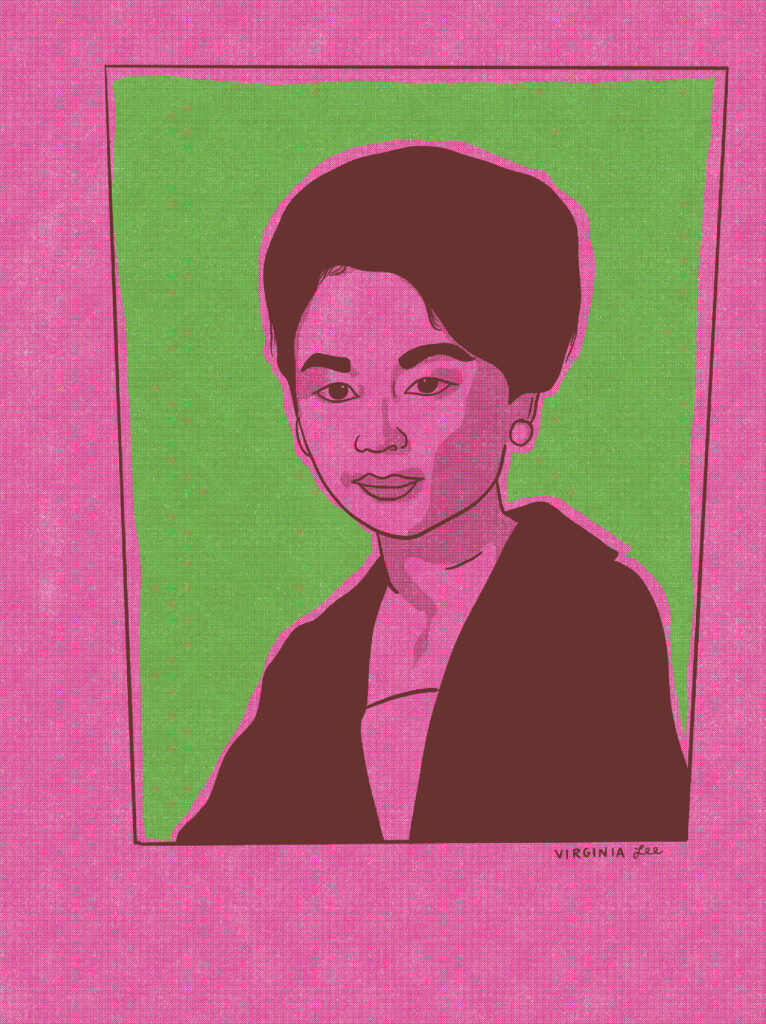
I stopped reading after that, told myself that my grief was too fresh, that my own grandfather’s death was too new. The tender grandfather Lee depicted did not perfectly mirror the one I had just lost, but losing him felt like losing my last connection to my Po Po, who we had lost over a decade before, to the answers to questions I still hadn’t asked yet, to a home that held pieces of me and my Asian Americanness.
Instead of reading the book, I posted a photo of its cover and clippings of profiles and reviews—my aunt’s beautiful author photo at its center. I wrote, I’m not sure I have the words to describe what this means to me yet. Admittedly, the idea of my great-aunt writing and publishing a novel about San Francisco’s Chinatown, the same Chinatown that she grew up in with my Gung Gung, felt more important to me than the book itself. I would read it soon.
What I didn’t say is that a part of me didn’t want to read it then because I was afraid it wouldn’t meet my expectations. What if it wasn’t the book that I needed it to be—feminist, subversive? I thought it would mean more if my great-aunt’s book mirrored my own writing. I wanted to be able to reach back and find some kind of guiding light.
In my own way, I was piling onto the numerous burdens my aunt and her novel have carried since its publication. Looking back into an archive of both white book reviewers and Asian American writers and literary critics, I see my aunt navigating a familiar racialized and gendered terrain—a push and pull between assimilation and authenticity: writing towards a white audience coupled with a fear that the characters you depict will ultimately be unrecognizable to the communities those characters are meant to be a part of. The desire to prove a knowledge of cultural histories and practices, the desire to prove a sense of belonging, to write towards being enough.
Next year, just over sixty years after the publication of The House That Tai Ming Built, I will publish my first book, A Small Apocalypse, a collection of stories that explores mixed-race Asian American and Chinese American identity formation, queerness, and what it means to feel and be haunted. And while my own book has been shaped by the better part of a century of Asian American literature that came after my aunt, I can’t help but recognize similar tensions and questions that Asian American writers are expected to navigate and have answers to—traps of cultural authenticity and mainstream relatability.
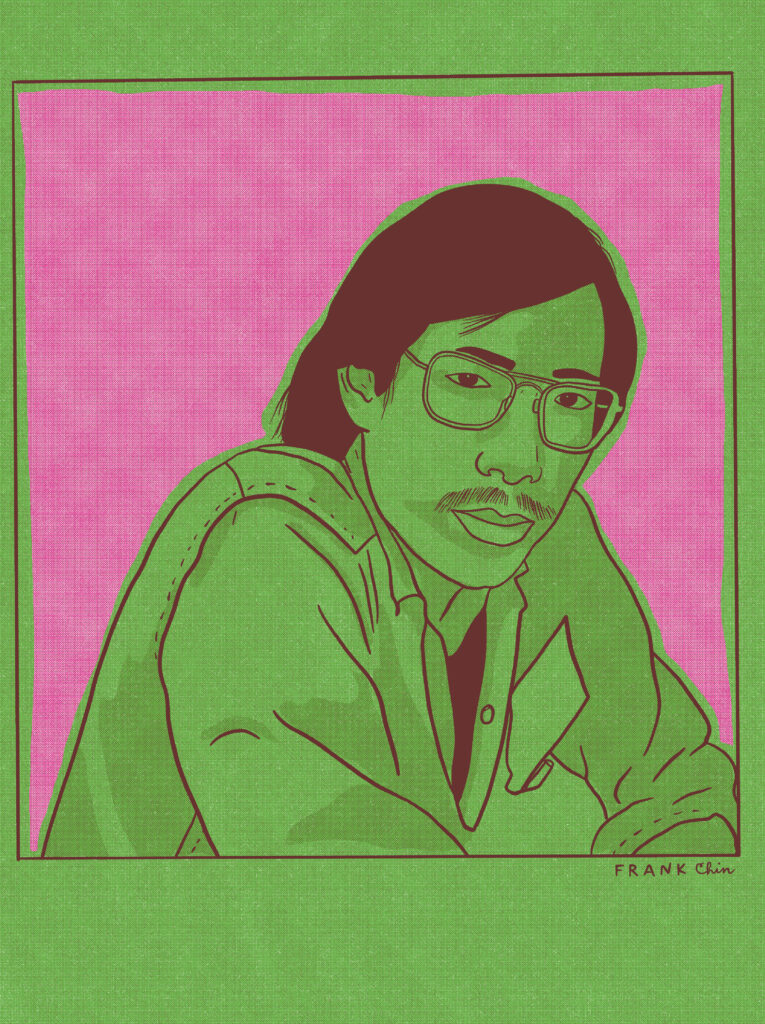
The House That Tai Ming Built spans generations—from the titular Tai Ming to his great-great-granddaughter Lin, from the California gold rush to the tail end of World War II. It is a novel about migration, piety and duty, prejudice, and the feeling of being torn between (what the novel paints as) two distinct cultures. It is a novel situated at multiple intersections: East and West, Chinese and American (white), and Chinatown’s Grant and California streets.
Published in 1963 when writer Virginia Lee was thirty-seven, a mother of two young girls, The House That Tai Ming Built is her first and only book. In a profile written by Dennis Powers of the Oakland Tribune, Lee admits to a different version of the manuscript being rejected by her future publisher five years prior. “It’s the first thing I’ve ever wrote with any hope of publication,” she says. “Of course, I don’t expect to make a great deal of money from it, but there’s a certain satisfaction. I’ve only had one depressing review so far.”
It’s unclear to which review she is referring, but in Powers’ own review of the book published a few days prior to the profile, he wrote, “Miss Lee’s characters are, for the most part, rice paper thin, her dialogue is frequently painful and the novel itself is occasionally gauche.” In the Sacramento Bee, a reviewer wrote that “the writing is naive, the technique rudimentary,” and in The Daily Record William Hogan wrote, “It is obviously a first novel, with the glaring faults of amateur prose written all over it.”
Yet, despite these harsh critiques over my aunt’s craft, these same reviewers applaud The House That Tai Ming Built and its author for what they see as an authentic story that “explains much about the Chinese-American community.” And while Hogan criticizes the book’s prose, he goes on to note that “this very amateurism and innocence may be what lends this book its charm and warmth,” and writes, “as a member of a Chinese-American family, the author is fully aware of the subtleties, cultural behavior and peculiarities of her characters.” The Kirkus review calls the book an “attractive novel” that is “stylistically prim, yet so detailed and real as to seem almost autobiographical.”
I feel implicated…like I too have a place in a feminist lineage, within the Asian American literary tradition.
Back in the Oakland Tribune profile, Powers describes my aunt’s home as “a delightful and friendly house with an Oriental garden.” And, while he notes her insistence that the book is not autobiographical, he adds the caveat that, “of course, many of the scenes and characters have their basis in her own experience, and the ancient proverbs taught to the children in the book are the same ones she remembers hearing from her elders as a girl.” In the article, Virginia Lee talks about the inadequate depictions of Chinese and Chinese American characters in the Western literary canon.
When asked what she thinks about C.Y. Lee’s The Flower Drum Song, she replies that his characters are more “Westernized” than her own. “Our books are about the same place, but we seem to write about different people,” she tells the reporter. For the reader, Powers adds a note that “Incidentally, the two writers aren’t related,” and then ends the profile by saying that “Virginia Lee is unquestionably the most decorative addition to the literary scene in a very long time.”
To white readers and a larger white literary establishment, the importance of Virginia Lee’s book did not lie in its craft, but in the polite and “prim” ways it depicted a world that was foreign to them. Virginia Lee was a decoration, a beautiful Chinese woman who could act as a sort of tour guide, rather than a writer to be taken seriously.
I felt mostly numb to these reviews as I read them—easily distanced from them. It all felt very familiar. Who hasn’t attended a reading by another Asian American writer and afterward been congratulated by another audience member on how well you did? Who doesn’t remember the white male poet who used an “Asian” pseudonym to publish his work? Who hasn’t heard a white writer bemoan their inability to publish because of their whiteness? I suppose my experience of reading the responses to my aunt’s writing are what Cathy Park Hong defines as “minor feelings”—feelings that “arise, for instance, upon hearing a slight, knowing it’s racial and being told, oh, that’s all in your head.”
However, when I allow myself to sit still with these reviews, I am crushed with grief for my aunt, for all the women in my family, for those of us who have had to read the quiet parts out loud, printed for the world to see. I feel a deep and righteous protectiveness over my aunt’s book, something stronger and fiercer than anything that I have felt for my own work. This is the other part of minor feelings, Hong explains, because “when minor feelings are finally externalized, they are interpreted as hostile, ungrateful, jealous, depressing, and belligerent, affects ascribe to racialized behavior that whites consider out of line.”
While the reviews of The House That Tai Ming Built written by white writers are patronizing, the nicety of their language so clearly gendered and racialized, the critiques from Chinese American writers and critics are even more direct in their distaste for the novel. Frank Chin wrote about my aunt’s book multiple times throughout the 1970s as a part of a cohort of Chinese American women who had been “used to legitimize the white stereotypes of us.”
Frank Chin, while possibly less known outside of an Asian American Studies class, is a figure who looms large for people invested in Asian American political movements, Ethnic Studies, and Asian American literature—so, me between 2012-2014. Author of plays such as The ChickenCoop Chinaman and The Year of the Dragon, he was also one of the co-editors of Aiiieeeee! An Anthology of Asian American Writers with Jeffery Paul Chan, Lawson Inada, and Shawn Wong, first published by Howard University Press.
In the introduction to this anthology, the editors argue that the limited works published by Asian American writers before and into the 1960s were “snowjobs pushing Asian-Americans as the miracle synthetic white people.” The introduction argues against assimilation, respectability, and erasure and instead offers writers described as “elegant or repulsive, angry, and bitter, militantly anti-white or not, not out of any sense of perversity or revenge but honesty.”
In reference to The House That Tai Ming Built, Chin argues that Lee centers a white reader by educating them on Chinese history, art, and food in a way that is researched while “being passed off as firsthand knowledge.” He argues that Lee and other Asian American women publishing around the same time are used to reify stereotypes that pit Asian Americans against other minorities, paint them as perpetual foreigners, and enforce white supremacy. Writers like Lee, Chin writes, are writing from a place of self-contempt fueled by “education and the publishing establishment;” According to Chin, “Pardew Lowe, Jade Snow Wong, Virginia Lee and Betty Lee Sung believe the popular stereotypes of Chinese-Americans to be true and find Chinese-America repulsive and don’t identify with it.” Instead, they chose to find success through assimilation.
Looking again at the reviews of The House That Tai Ming Built written for white readers, there is plenty of material to bolster some of Chin’s arguments—the value of Lee’s novel did not lie in its artistic or creative aspirations, but as anthropological insights that verify what white people already suspect: Chinese and Chinese Americans as peculiar, foreign, and other.
And, at the same time, Chin’s valid critiques of white supremacy are enmeshed with misogyny, for his rage appears to be rooted in the idea that “good or bad, the stereotypical Asian is nothing as a man. At worst, the Asian-American is contemptible because he is womanly, effeminate, devoid of all the traditionally masculine qualities of originality, daring, physical courage, and creativity.” And what, according to Chin, reinforces this particular stereotype? “The mere fact that four out of five American-born Chinese-American writers are women.”
For Chin, the only “right” Asian American representation is rooted in a traditionally straight and cisgendered masculinity. The more I read his work, the less I see him fighting for a collective of oppressed people and the more I see him fighting for a recognition of his own manhood.
Last year, during an Asian American caucus at a writers conference, I shared a little bit about my aunt’s book and Chin’s critique of it and her.
“Is your aunt Maxine Hong Kingston?” someone in the group asked, her mouth open and eyes wide.
Her question was rooted in another well-known aspect of Asian American literary history: the decades-long feud between Maxine Hong Kingston and Frank Chin—described by Edward Iwata in a 1990 Los Angeles Times article as “a literary battle for the soul of Asian America.”
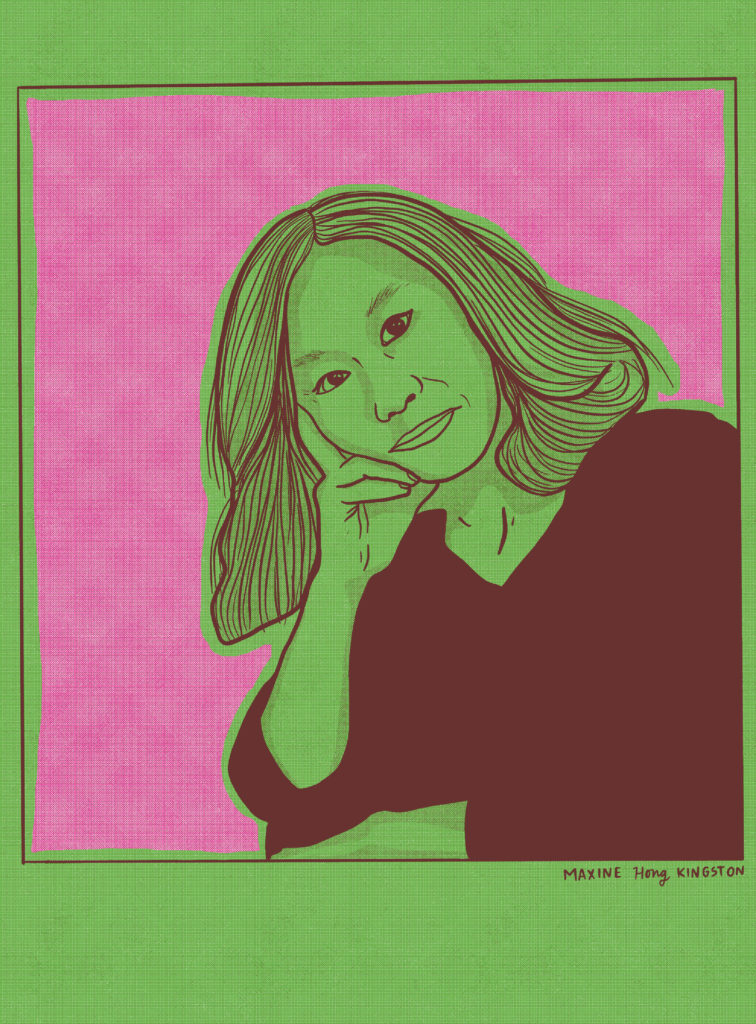
Kingston’s genre-bending book, The Woman Warrior: Memoirs of a Girlhood Among Ghosts, uses retellings of Chinese folklore and myth to explore the life of a young woman in 1960s San Francisco Chinatown. While published as nonfiction, it plays with supernatural, fabulist, and speculative elements, a form she has described as “talk-story.”
Chin, already against first-person narratives as inherently Western and Christian, famously described Woman Warrior as “another in a long line of Chinkie autobiographies by Pocahontas yellows blowing the same old mixed-up East/West soul struggle.” Chin argued that like the other Asian American woman writers before her, Kingston’s work pandered to white readers and literary power structures and bastardized the original myths.
In an essay that explores “creativity and beef,” Hua Hsu writes that “the war between Kingston and Chin was a foundational moment in Asian American literature…What Chin feared was that Kingston’s version of their experience would become popular and immovable.” He argues that when mainstream literary establishments are dominated by white editors, readers, reviewers, etc., “whose version of existence” is at stake. The marketplace becomes the arbiter of what is or is not an authentic representation of a real or imagined community.
In a 2022 conversation between Maxine Hong Kingston and Viet Thanh Nguyen, Nguyen asked Kingston if she has anything more to say about her beef with Frank Chin. In her response, she acknowledges two of the biggest critiques Chin had of her work: the alleged emasculation of Asian men and how she changed inherited myths. However, what she names as the biggest difference between them is that she is more of a pacifist and for Chin, “one of his… mantra[s] is dòuzhēng. Fight war. Writing is fighting.”
We are left, again, with a false binary—the female pacifist and the male warrior—in a literary history already littered with them: authenticity/assimilation, masculinity/femininity, real/fake, peace/war. Binaries thrive in both feelings and realities of scarcity. What made Maxine Hong Kingston hyper-visible, and most likely so threatening to Frank Chin, was her status as one of the few popularly published Asian American writers of that time. But rather than fight over one or the other, rather than picking a side, I wonder what is disrupted and created in moments of abundance—queer, trans, femme, wild, and weird.
Maxine Hong Kingston’s work has inspired a whole generation of Asian American writers and other writers of color too—writers who explore the murkiness of “truth” and reject the notion that there is a “right” way to be.
Frank Chin’s misogyny has found a home in the online “Men’s Rights Asian” (MRAsians) movement. MRAsians are particularly known for harassing Asian women online who they deem as race traitors and for perpetuating anti-Blackness. After Celeste Ng published her debut novel featuring a family with an Asian father and white mother, she described the harassment she received from men who insist she is self-hating because of her own interracial marriage and mixed-race child. In an essay later published in The Cut, Ng spoke to other Asian American writers who experienced similar misogynistic vitriol. As horrifying as this is, reading about it makes me feel less alone.
The first story I ever published, “One-Thousand-Year-Old Ghosts,” is about matriarchal bonds, feelings of in-betweenness, and what we inherit from our elders. It was first published by Hyphen Magazine, an online Asian American literary magazine, in 2016. I received an enthusiastic email from my future editor only a week after I had sent the story to her; she would later nominate and submit it for the first PEN/Robert J. Dau prize. To my surprise, it was selected as one of the winners and then later chosen and read on LeVar Burton Reads, and then again on Symphony Selected Shorts. I name these things to trace the life this story has had beyond its initial publication—a life that not many stories get the chance to live.
It’s also one of the only stories I’ve written that my family has read. At my brother’s wedding, one of my own aunties offhandedly mentioned that she had read the story after it had been anthologized with the other PEN winners.
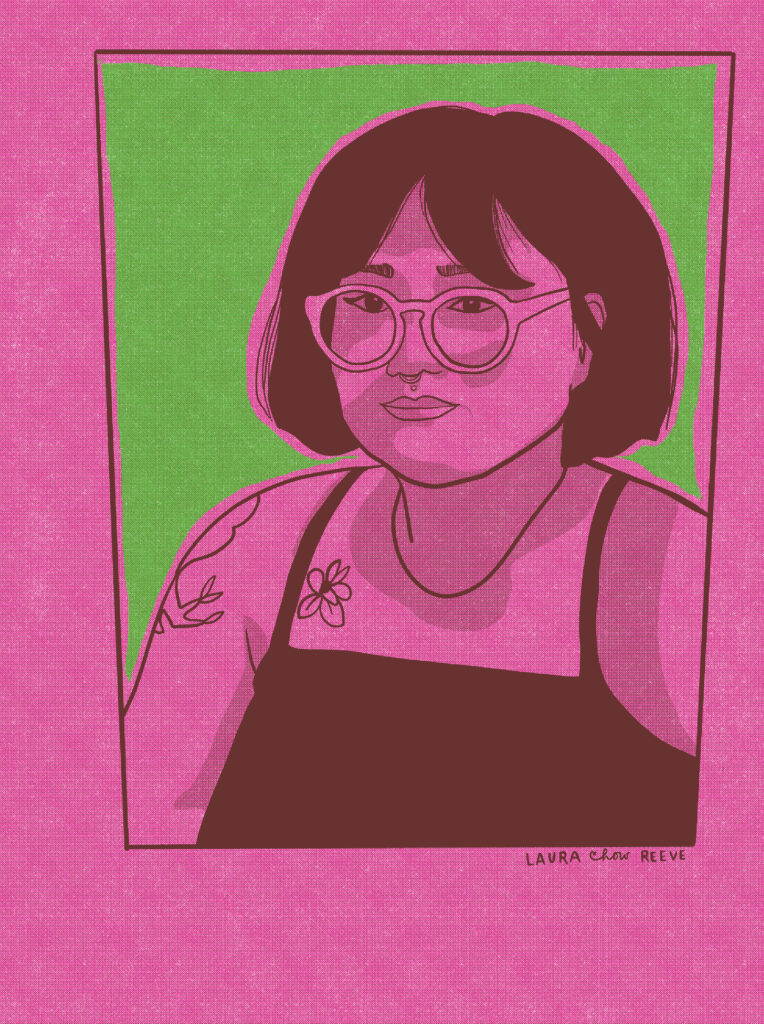
“What did you think?” I asked her.
“Very,” long pause. “Asian American Studies,” she said.
I couldn’t help but laugh—such an amazing and (I think) unintentional slight. It remains a favorite story of mine to tell strangers about my writing and my family, and yet, it still pokes at a question I can’t shake: what if I was doing the very thing that Frank Chin had accused my aunt of before I was even born, using a master’s degree to pass off research as firsthand knowledge or experience?
After all, the title of the story is based on a dish I have never even eaten.
And what if the expectations some readers of my book might have based on “One-Thousand-Year-Old Ghosts” are not met? Like my auntie already named, it is, by far, the most stereotypical “Asian American” story in the collection. It is rooted in Chinese American migration histories; San Francisco’s Chinatown, like The House That Tai Ming Built, is its primary backdrop.
And while similar themes, particularly of longing and haunting, are woven throughout A Small Apocalypse, the other thirteen stories take place in present-day Philadelphia and Florida—they are swampy and feral and explicitly queer. There are more explorations of chosen family than biological ones. When I can situate myself in abundance, I know these stories, of course, are still Asian American stories.
Now that I have finally finished reading my aunt’s novel, I have more questions than answers. Admittedly, I find the discourse around her novel more illuminating or engaging than the text itself. There is something weirdly comforting in researching the feud between Kingston and Chin, something reassuring that it wasn’t just my aunt who found herself under Chin’s misogynistic scrutiny.
I am unsure of what my aunt’s writing community looked like in practice, if she had one at all, but this connection feels like she was a part of something bigger even if unintentionally. Even if The House That Tai Ming Built has been largely forgotten, my aunt was a part of a larger and important discussion about gender, race, and literature. And I feel implicated in that, like I too have a place in a feminist lineage, within the Asian American literary tradition.
Beyond that, I still look at her novel with profound wonder and pride. I am proud that she did something that I know, firsthand, to be so hard. I am in wonder that long before I fell deeply in love with books, she held a copy of her own in her hands.
In an interview between Frank Chin and Virginia Lee, my aunt tells Chin, “I wouldn’t want to go on a Chinese, you know, American conflict like that again. I don’t want to do another one.”
“Why?” he asked. “Was it difficult?”
“It wasn’t difficult,” she said, “but very candidly now, this might not even…” She took a deep breath. “I just don’t think it’s that interesting.”
Part of me wonders if my aunt didn’t publish another book because, well, who the hell would want to after experiencing such explicitly racist and misogynistic reviews, after people described her writing—something she had worked on for years—as rice-paper thin, gauche, rudimentary, painful? But, also, who knows? This was before the internet, before the possibility of a Google alert—she could have been truly unbothered. She was a wife, a mother, a teacher. She loved music—she picked up the violin at age sixty. Maybe it was simply a matter of interest.
So, forget Chin—what would second book from my aunt would have looked like? What did she like to read? What advice would she have for me as I become a debut author?
What would the textures of our conversations around authenticity, assimilation, white supremacy, and misogyny feel like?
Would she have liked my book? Would it have been complicated?
__________________________________
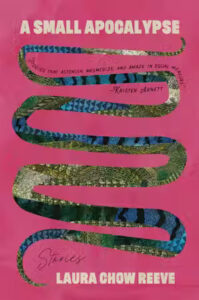
A Small Apocalypse by Laura Chow Reeve is available from TriQuarterly Books, an imprint of Northwestern University Press.
Laura Chow Reeve
Laura Chow Reeve is a writer and illustrator living in Richmond, Virginia. Her fiction has been published in the Rumpus, Catapult, and Joyland, among other publications. Her story in Hyphen was a 2017 winner of the Pen/Robert J. Dau Short Story Prize for Emerging Writers and featured on LeVar Burton Reads.












